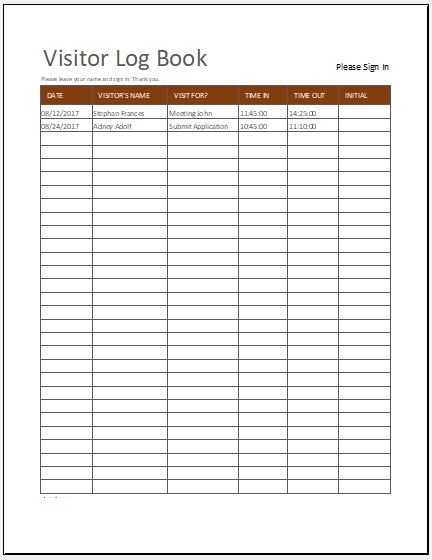
When hosting an event or running a business that welcomes guests, it’s important to keep track of who comes and goes. A visitor registry book can be a valuable tool in maintaining a record of your visitors.
This article will explore what a visitor registry book is, why it’s important to have one, how to create and use one effectively and provide some tips for successful visitor registration.
What is a Visitor Registry Book?
A visitor registry book is a document or template that allows you to record the details of each visitor who enters your premises. It typically includes fields for the visitor’s name, contact information, purpose of visit, time in and out, and any other relevant details. The book can be printed out and placed at a designated location for visitors to fill out upon arrival.
Why Use a Visitor Registry Book?
There are several reasons why using a visitor registry book is beneficial:
- Security: A visitor registry book helps you keep track of who is entering your premises, providing an additional layer of security.
- Emergency preparedness: In case of an emergency, having a record of visitors can be crucial for evacuation procedures and accountability.
- Contact information: The registry book allows you to collect the contact information of your visitors, which can be useful for future communication.
- Analytics: By analyzing the data collected in the registry book, you can gain insights into visitor patterns, peak hours, and other useful information.




How to Create and Use a Visitor Registry Book
Creating and using a visitor registry book is a straightforward process. Follow these steps to get started:
1. Determine the Format
Decide whether you want to create a physical book or use a digital template. If you opt for a physical book, you can design and print out the pages yourself or purchase a pre-made visitor registry book. Alternatively, you can use a digital template and print out the pages as needed.
2. Design the Fields
Consider the information you want to collect from your visitors and design the fields accordingly. Include fields for the visitor’s name, contact information, purpose of visit, time in and out, and any other relevant details. Make sure the fields are clear and easy to fill out.
3. Print and Prepare the Book
If you’re creating a physical book, print out the pages and bind them together. You can use a three-ring binder, spiral binding, or any other method that works for you. If you’re using a digital template, make sure you have a printer available to print out the pages as needed.
4. Place the Book in a Visible Location
Choose a location near the entrance or reception area where visitors can easily find and access the book. Consider placing it on a table or podium along with pens or pencils for convenience.
5. Instruct Visitors on Usage
Provide clear instructions to your visitors on how to fill out the registry book. Include information on what fields to complete and any additional requirements, such as signing or initialing.
6. Regularly Collect and Review Entries
Set a schedule for collecting and reviewing the entries in the visitor registry book. This will allow you to keep track of your visitors and identify any patterns or issues that need attention.
Tips for Successful Visitor Registration
Here are some tips to ensure successful visitor registration:
- Keep the book organized: Assign a designated person to collect and review the entries regularly. Make sure the book is kept in a secure location when not in use.
- Provide clear instructions: Make sure visitors understand how to fill out the registry book correctly. Use clear signage or written instructions if necessary.
- Respect visitor privacy: Ensure that the information collected in the registry book is kept confidential and used only for its intended purposes.
- Have backup copies: Consider creating digital copies or backup pages of the visitor registry book in case of loss or damage.
- Regularly update the book: If you make any changes to the fields or format of the registry book, make sure to update it accordingly.
- Train staff: If you have staff members who will be responsible for managing the visitor registry book, provide them with proper training on its usage and importance.
- Review and analyze the data: Take the time to review the data collected in the registry book and use it to improve your visitor management processes.
Final Thoughts
A visitor registry book is a valuable tool for keeping track of your guests and maintaining a record of their visits. Whether you’re hosting an event or running a business, implementing a visitor registry book can enhance security, emergency preparedness, and communication.
By following the steps outlined in this article and applying the tips provided, you can create and use a visitor registry book effectively.
Visitor Registry Book Template Excel – Download